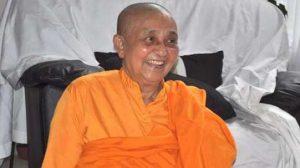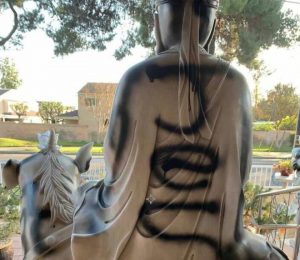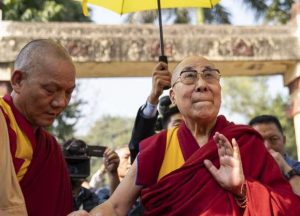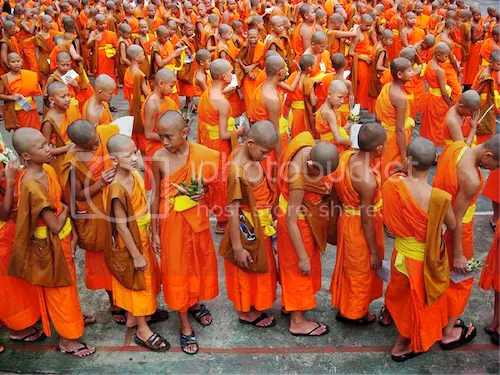
Of all the artists I have known personally over the years who have featured Buddhist subjects and concepts in their work, photographer Alan McArthur most fully practices the Zen Buddhist idea of living in the moment. Primarily a travel and documentary-style photographer for the past two decades, McArthur has traveled the world capturing landscapes, architecture, people, and the tiny details of life with an eye that truly appreciates life’s fragility and the importance of embracing as many moments of it as possible. Although his work has taken him to parts of Africa, Central America, the United States, and Europe, his most dramatic and often poignant images are from Thailand, the place he has considered his home base for over a decade and one that has allowed him to both observe and be a part of Buddhist life. In Thailand’s northernmost major city, Chiang Mai, McArthur has photographed the architecture of Buddhist temples and the sculptures within, the monks whose lives are centered on Buddhist study and practice, and the people of the city, whose world is colored by their Buddhist beliefs. Though not officially a practitioner of Buddhism, McArthur lives in many ways like a monk. He has few attachments—minimal possessions, no fixed abode, and only a handful of close, precious relationships. Although he has tried different types of meditation, his main meditational tool is his camera. He has told me on several occasions, “Photography has kept me alive,” and I know, because he is my younger brother, that he is not just being dramatic when he says this.
McArthur has looked death in the eye multiple times, first when he was about 20 after he was diagnosed with a child’s form of acute lymphoblastic leukemia and was knocked out of commission just as he entered his adult years. He spent much of his early 20s in and out of the cancer ward in Addenbrooke’s Hospital in Cambridge, England, being treated with multiple rounds of chemotherapy and radiotherapy. He achieved remission and then relapsed, just one year after his (our) mother died, also of leukemia. Finally a bone marrow transplant from our sister cured him of the disease. But he was still left with the side effects and consequences of the treatment—two hip replacements, recurring shingles, sterility, a severely undermined immune system and heart, and cataracts that impair his vision—a particularly cruel affliction for a photographer. Yet, despite his compromised body and two almost deadly bouts with double pneumonia in recent years, McArthur refuses to give up on life and art, choosing to live and create more fully than most.
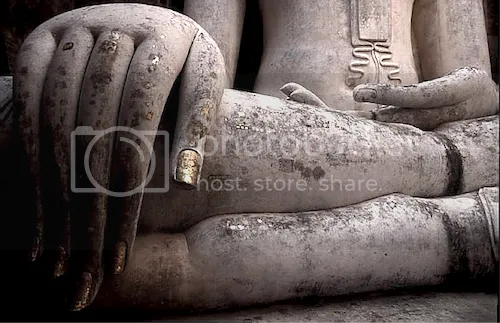
When his own personal journey is taken into account, many of his photographs of Buddhist subjects can be viewed as expressions of his own resolve and his understanding of suffering and the fleeting nature of life. Although his first photographs of Thai Buddhist temples and statues were taken with publication in travel magazines in mind, McArthur’s work displays a keen sensitivity to detail that has captured the humanity in much Buddhist art and architecture. In the above close-up image of the Buddha’s hand reaching down to touch the Earth, we do not see the Buddha’s entire meditating form or his contemplative facial expression. By choosing to focus instead on the elegant stone hand, with chipped gold leaf still showing on the fingernails, he shows us all we need to see to feel the power of the Buddha’s resolve at the moment he reached down and attained enlightenment. Compositionally, the image is powerful too, with the curve of the hand arcing over the parallel straight lines formed by the Buddha’s crossed legs.
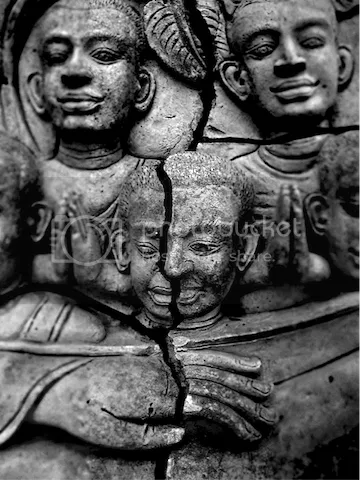
In a black-and-white image of cracked stone Buddhist statuary, we are reminded that there is spiritual value and power in even damaged Buddha images. The figures depicted are from a detail of a carved stone frieze depicting the Buddha lying on his deathbed and attaining final enlightenment, or parinirvana. Here again is the Buddha’s hand, this time cracked in half. Above it is the face of one of his followers who has come to mourn his passing, also cleaved in two and flanked by two fellow mourners, their hands in prayer. The original parinirvana scene itself appears sad at first since most of the Buddha’s followers are shown grieving the loss of their great teacher. But to someone who has fully understood the Buddha’s teachings (and only one of his disciples had apparently reached this point), the moment was far from tragic, as the Buddha had shed his physical form and was therefore able to transcend the material world and attain full nirvana. Though accidental, and no doubt caused by the passing of time, the crack in the stone adds further drama and poignancy to the image, symbolizing perhaps the pain and loss we suffer in our material world. Perhaps too, by highlighting the crack right in the center of the image instead of avoiding it, McArthur reminds us that the human spirit can be strong enough to triumph over pain and loss.
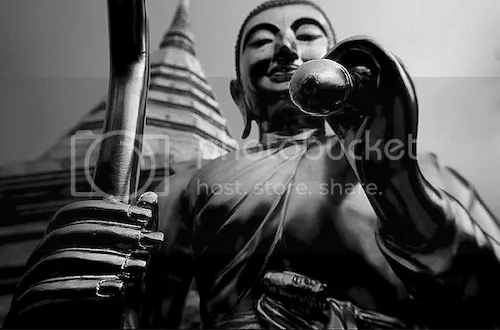
In another black-and-white work, McArthur has positioned his lens below a standing image of the Buddha. From this angle, we view the smiling Buddha gazing down at us with a broad, benevolent smile that very simply but powerfully exudes the compassion that is at the very center of Buddhist beliefs. Such warm, inviting images of the Buddha have been created over the centuries to encourage new worshippers to follow the Buddha’s teachings, and they are still prevalent in Buddhist cultures today. In Thailand, roughly 90 per cent of the population is Buddhist. By spending a good part of the last 15 years in this fascinating culture, visually documenting its people, places, and practices, Alan McArthur has not only found a way to strengthen himself and create a fulfilling life, but he has also created a rich body of photographic work that offers others much to contemplate.

Alan McArthur’s Buddhist and non-Buddhist photography can be seen at his Facebook Page: Chiang Mai: A Day of Photography.
Meher McArthur is an Asian art curator, writer, and educator based in Los Angeles. She has curated over 20 exhibitions on aspects of Asian art. Her publications include Reading Buddhist Art: An Illustrated Guide to Buddhist Signs and Symbols (Thames & Hudson, 2002), The Arts of Asia: Materials, Techniques, Styles (Thames & Hudson, 2005), and Confucius: A Biography (Quercus, London, 2010; Pegasus Books, New York, 2011).





